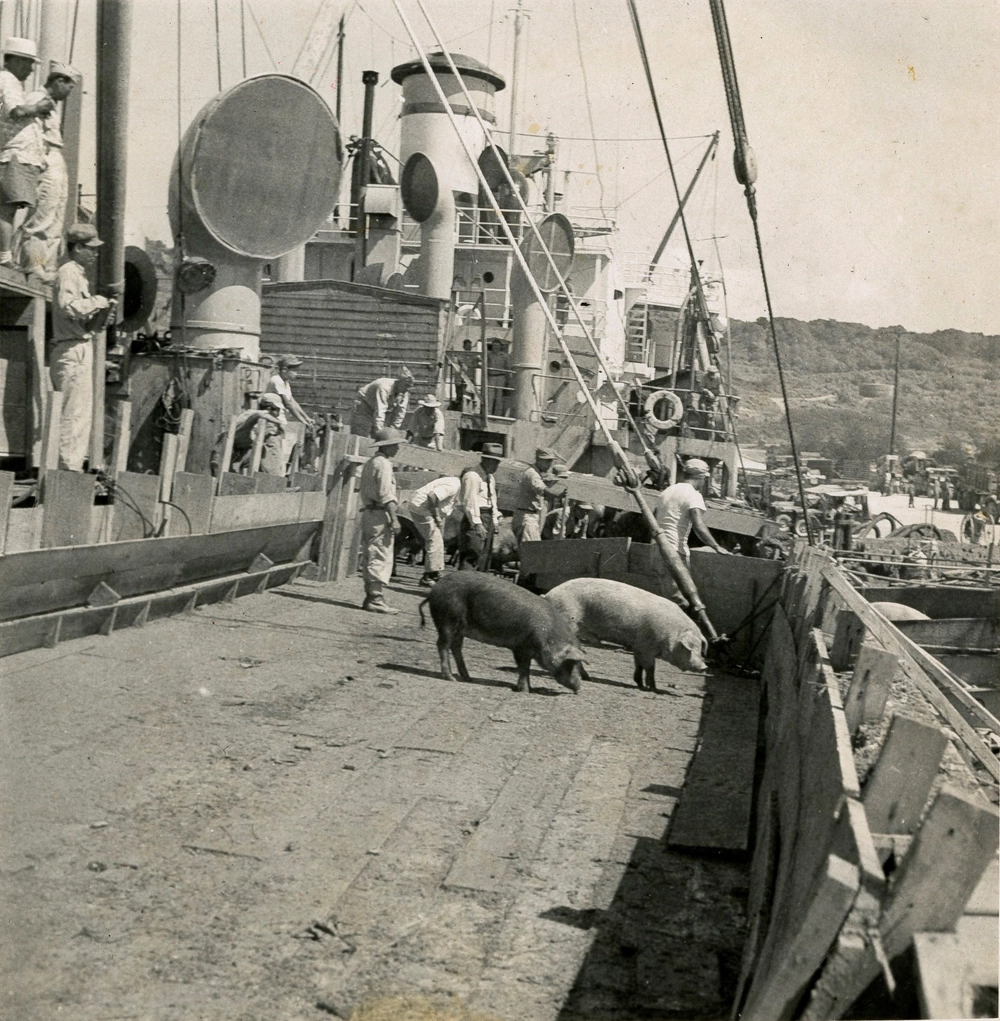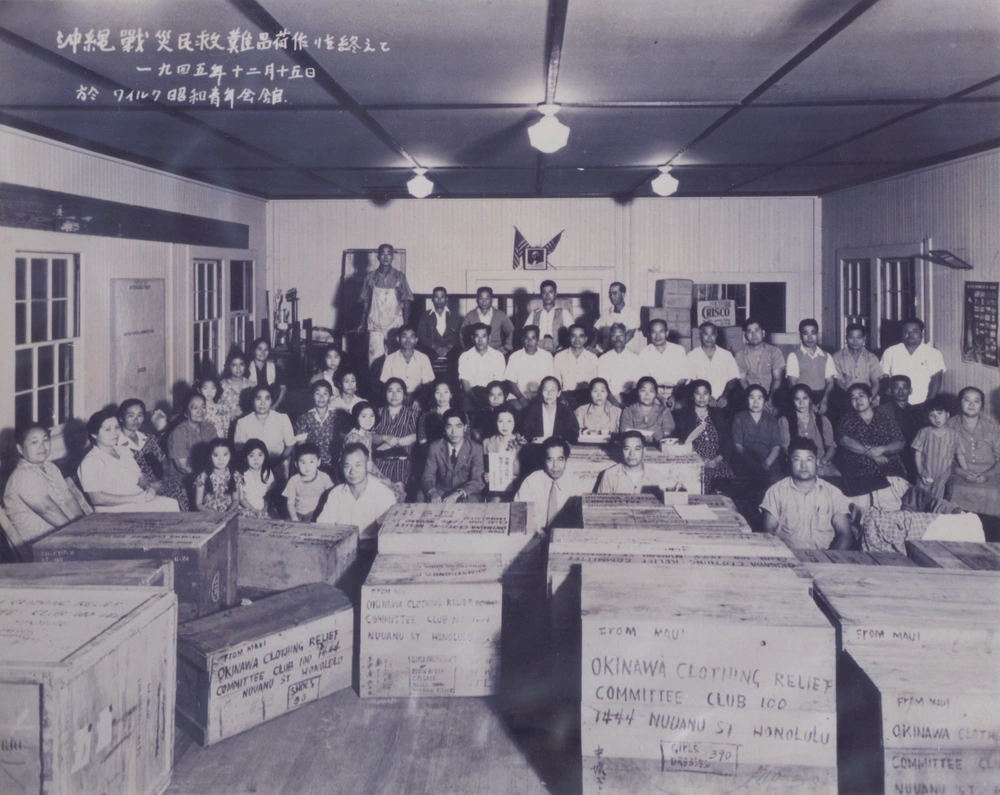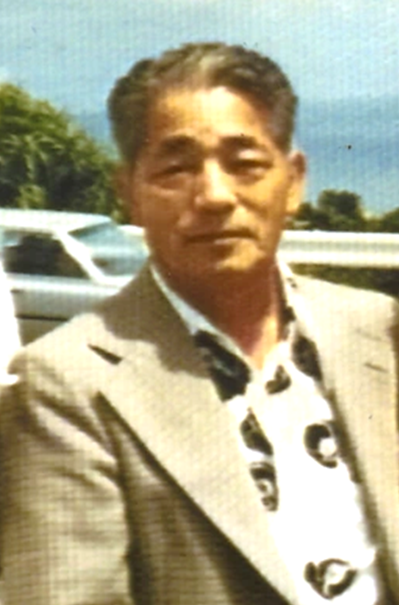1. Early Life and Background
Thomas Taro Higa's early life was marked by a unique bicultural upbringing, spanning his birth in Honolulu, Hawaii, and his formative years spent in Okinawa, Japan. This dual heritage profoundly shaped his future contributions as a humanitarian and cultural intermediary.
1.1. Born in Hawaii, Raised in Okinawa
Thomas Taro Higa was born on September 22, 1916, in Honolulu, Hawaii, as the third of twelve children to Kana and Kamezo Higa, who were immigrants from Okinawa. In the early 1900s, many Okinawan and western Japanese people immigrated to Hawaii as "immigrant laborers" with the aspiration of working hard and honorably returning home. Due to his parents' demanding work schedules, Higa, along with his older brother and sister, was sent back to their ancestral home in Shimabukuro, Kitanakagusuku, Nakagami-gun, Okinawa-ken, where he was raised by his grandparents until he was nine years old.
1.2. Early Career and Experiences in Japan
After his childhood in Okinawa, Thomas Higa moved to Osaka with his cousin and his cousin's family, seeking new opportunities. His first job was at Daimaru Shoten in Nomura-cho, a store owned by an individual from Wakayama Prefecture. He then became a live-in apprentice at Horikoshi Kotetsu Sha, a wholesale cosmetics store owned by an Imperial University graduate from Toyama Prefecture. Higa's interest in electricity began during his time at Horikoshi Kotetsu Sha, where he read about the subject. Later, he was also employed at Fuji Denro Kogyo Ltd. under Yasutaro Goto, a company that manufactured iron hardening kilns for military use.
In 1937, Higa moved to Tokyo to further his studies in electrical technology and applied for several patents at the Patent Bureau. During this period, his frequent visits to the American Embassy to prove his American citizenship led to him being suspected as a spy by the Japanese secret police. He was interrogated and subjected to violence, an experience that prompted his return to Hawaii in 1940, just a year before the outbreak of the Pacific War. Upon his return, he assisted his father on their large farm in Hawaii.
2. Military Service in World War II
Thomas Taro Higa's military service in the United States Army during World War II was characterized by significant combat experience, heroic humanitarian actions, and vital contributions to the war effort as a bridge between cultures.
2.1. Enlistment and Service in the 100th Infantry Battalion
After returning to Hawaii, Thomas Higa was conscripted in June 1941 and initially stationed at Schofield Barracks on Oahu. Following the Japanese attack on Pearl Harbor on December 7, 1941, Higa, along with other Nisei units, participated in coastal patrols. Subsequently, amidst the forced internment of Japanese Americans, he was transferred from Honolulu to Fort McCoy, Wisconsin, and then to Camp Shelby, Mississippi, where he underwent basic training with the 100th Infantry Battalion. This unit was predominantly composed of Japanese American soldiers, often referred to as Nisei.
2.2. European Theater and Awards
In August 1943, Higa's 100th Infantry Battalion landed in Oran, Algeria, and by September, they arrived in Salerno, Italy. The battalion was attached to the 34th Infantry Division. During fierce combat in the Battle of Cassino on November 5, 1943, Higa was severely wounded by intense shelling. Despite his injuries, he heroically carried two fellow soldiers 150 yd to a sheltered area. He then returned to the war zone to provide further aid, sustaining a second severe injury from a bombing and fire. For his valor and selflessness under heavy fire, Thomas Higa was awarded the Purple Heart and the Silver Star, subsequently receiving an honorable discharge from military service.
2.3. Lecture Tours for Japanese American Support
Following his treatment at an Army hospital in Georgia, Thomas Higa embarked on a recuperation trip where he visited the Amache concentration camp, a Japanese American internment facility in Colorado. This visit prompted him to deliver a lecture on the valor of Japanese American soldiers in the European Theater. From June 1944 to January 1945, Higa conducted a seven-month lecture tour across 75 Japanese American internment camps throughout the United States. This tour was sponsored by the United States Army Relocation Authority and the Japanese American Citizens League (JACL), with the primary goal of raising awareness and garnering support for Japanese American troops serving in the U.S. military.
2.4. Role in the Battle of Okinawa
Thomas Higa's linguistic abilities, encompassing English, Japanese, and Okinawan, made him an invaluable asset to the United States military. Recognizing his unique skills, General Kendall J. Fielder personally requested Higa's deployment to Okinawa during World War II to assist in persuading the local population to surrender. Higa's mission was to establish a personal connection with the Okinawan civilians, who were often hiding in caves and reluctant to emerge due to fear and Japanese propaganda.
In a remarkable display of courage and humanitarianism, Higa risked his own life by entering these caves unarmed. He repeatedly called out in the local Okinawan dialect, ワンネー、ヤマグスクヌタルーヤイビーン。ンジティクミソーリヨーWan-nē, Yamagusukunu Tarū yaibīn. Njiti kumisōriyōryu, which translates to "I am Higa Taro from Nakagusuku Village. Please trust me and come out." He entered caves twelve times, successfully persuading civilians to surrender on eleven occasions, thereby saving thousands of lives and mitigating immense suffering. His actions were pivotal in bridging the cultural divide and encouraging peaceful surrender, directly contributing to the saving of several villages during the brutal Battle of Okinawa.
3. Post-War Contributions and Advocacy
Following World War II, Thomas Taro Higa dedicated himself to significant post-war activities aimed at the recovery of Okinawa and the advocacy for the rights of Japanese Americans, leveraging his bicultural background and wartime experiences.
3.1. Okinawa Relief and Reconstruction Efforts
Upon his return to Hawaii on September 13, 1945, from the Battle of Okinawa, Thomas Higa immediately began organizing and supporting relief efforts for his war-torn homeland. He delivered lectures across various communities, sharing the dire conditions in Okinawa. The Okinawan community in Hawaii responded swiftly, initiating a massive relief campaign that included collecting and delivering essential supplies such as pigs, food, clothing, medicine, school stationery, and vegetable seeds. The Okinawa Clothing Relief Association was specifically organized on October 29, 1945, to coordinate these efforts.
Initially, the transportation of these relief supplies was facilitated by the United States Navy; however, operations temporarily halted in July 1946 when the U.S. military governance of Okinawa transitioned from the Navy to the Army, leading to a disruption in naval cooperation. Nevertheless, the relief efforts continued, being taken over by the LARA (League for Asia Relief). The Okinawan community in Hawaii successfully raised over 50.00 K USD, which is equivalent to approximately 526.00 K USD in today's currency, within six months for these efforts. This included the purchase of 550 pigs from Omaha, Nebraska, which were then shipped from Portland, Oregon, to replenish Okinawa's depleted livestock.


In 1969, Higa produced a color documentary film titled "Life in Hawaii - Okinawans 65 Year Documentary" (ハワイに生きるHawaii ni IkiruJapanese), which commemorated the 65th anniversary of Okinawan immigration to Hawaii, documenting the lives and experiences of Okinawan immigrants over six and a half decades. He also authored books documenting Okinawan immigration history; in 1974, he published Imin Wa Ikiru (Immigrants Live On), an account of various Okinawan immigrants to Hawaii, North America, and South America. In 1982, he followed up with Aru Nisei No Wadachi (Memoirs of a Certain Nisei).
3.2. Advocacy for Japanese American Civil Rights
After the war, Thomas Higa served as the editor of the Colorado Times in Hawaii. In 1946, he became a vocal advocate against the discriminatory practices that denied naturalization rights to Japanese Americans, pushing for equal treatment. Through his involvement in lecture tours and the movement to secure naturalization rights, Higa played a significant role in fostering a powerful wave of advocacy in Hawaii. His efforts, alongside those of many others, contributed to the eventual recognition of naturalization rights for Japanese Americans with the passage of the Immigration and Nationality Act of 1952. He consistently worked to combat discrimination and promote equality for minority groups, ensuring their rights were recognized and protected.
4. Inventions and Innovations
Beyond his military and humanitarian contributions, Thomas Taro Higa demonstrated considerable talent as an inventor, particularly in the field of electrical technology, pursuing patents for his creations.
4.1. Electrical Innovations
Thomas Higa's fascination with electricity began during his apprenticeship at Horikoshi Kotetsu Sha in Japan. Upon returning to Hawaii, he applied his burgeoning knowledge to create practical solutions. He sought to replace the kerosene lamps common in homes with an electric generator. Utilizing water from a stream near his house, along with salvaged materials and an abandoned car, he ingeniously constructed a generator to power his home.
Word of his self-made generator spread, eventually reaching Professor Tadaoki Yamamoto, the Department Chairman of the Faculty of Science & Engineering at Waseda University in Japan. Professor Yamamoto traveled to Hawaii to meet Higa and was so impressed that he invited Higa to Japan to further his studies. Throughout his life, Higa continued his inventive pursuits, completing fifteen other inventions and applying for several patents at the Patent Bureau in Tokyo, showcasing his ingenuity and technical skills.
5. Personal Life
Thomas Taro Higa's personal life included a unique courtship and marriage that exemplified the challenges and resilience of his generation.
5.1. Marriage to Toshiko Chinen
Thomas Higa married Toshiko Chinen on November 22, 1945, in Kauai, Hawaii, her birthplace. Their relationship began through correspondence during the war; Toshiko wrote him letters of encouragement, and they frequently exchanged stories about their families, friends, and eventually more personal details about their health and experiences. Their bond deepened through these letters, and they decided to marry as soon as Higa returned from the war, despite having never met in person. Higa initially harbored doubts about the marriage due to this unusual circumstance. However, an encouraging letter from his former teacher, dated December 18, 1943, helped solidify his resolve. The letter read, "An evil may sometimes turn out to be a blessing in disguise. Do not feel downhearted. One's mental power controls his bodily condition. Let your mental strength heal your wounds. I have no doubt that you can do this." Two years later, he married Toshiko Chinen.
6. Death
Thomas Taro Higa passed away on February 11, 1985, in Honolulu, Hawaii.
7. Legacy and Commemoration
The lasting impact of Thomas Taro Higa's life and work is widely recognized through numerous awards, cultural tributes, and his profound social and humanitarian influence.

7.1. Awards and Honors
Thomas Higa was a recipient of significant accolades for his courageous wartime service and extensive post-war contributions. He was awarded the Purple Heart for injuries sustained in combat and the Silver Star for his heroic actions during heavy fire in Italy on November 5, 1943. Specifically, while wounded, he carried two men to a sheltered area and then re-entered the war zone to provide further aid. These acts exemplify the bravery recognized by the Silver Star.
In May 1983, Higa was honored by the Okinawan government and Ryukyu University for his numerous contributions to the Okinawan people during and after the war. In July 1983, he received the Okinawa Times Award, and in August 1984, the Japanese American Citizens League presented him with a certificate of appreciation at their national convention in Honolulu, Hawaii.
7.2. Cultural Recognition and Memorials
Thomas Higa's remarkable life and contributions have been preserved and celebrated through various cultural tributes. In 1995, Tetsuro Shimojima chronicled Higa's activities in his book Umi kara Buta ga Yatte Kita (Pigs Came From the Sea), which subsequently became a symbolic narrative of the post-war Okinawa relief movement and was even adapted into a musical.
On April 24, 2015, Higa's eldest son, Alvin (Aisaku) Higa, a third-generation Okinawan American residing in California, visited Okinawa. During his visit, he shared stories of his father's interactions with former Okinawa Governor Masahide Ota and announced the donation of his father's extensive collection of photographs and manuscripts to the Okinawa Prefectural Archives and other institutions. Alvin also conveyed a message he believed his father imparted to him in a dream: "The Okinawan language saved Okinawa, but now there are few who can speak it, and it is in a critical situation. Please help the Okinawan language." Alvin expressed his desire to study Okinawan language.
In 2015, NHK produced a docudrama in Higa's memory titled Nikkeijin Who Saved Okinawa (戦場の真心(チムグクル)~沖縄を救った日系人~Senjō no Chimugukuru ~Okinawa wo Sukutta Nikkeijin~Japanese), directed by Yuji Nakae and featuring Gori of Garage Sale as narrator and actor. The filming took place in Shimabukuro, Kitanakagusuku, Higa's ancestral home, with local residents participating as extras. On March 5, 2017, a memorial monument titled "Pigs Came From the Sea" was erected on the grounds of the Uruma City Arts Theater in Uruma, Okinawa, further cementing his legacy. In a subsequent lecture in the United States, Tetsuro Shimojima reflected on Higa's impact, stating, "There was a young Nisei who sowed a single seed in Hawaii to save Okinawa... This single seed not only spread into a large movement throughout Hawaii, but also, like the bursting seeds of balsam, spread into the rich soil of the global Uchinanchu community."
7.3. Social and Humanitarian Impact
Thomas Taro Higa's actions left a profound social and humanitarian impact. His bravery in entering caves during the Battle of Okinawa saved thousands of lives and served as a powerful act of reconciliation, bridging the deep divide between the American forces and the Okinawan civilian population. His post-war efforts to organize and lead relief initiatives demonstrated his unwavering commitment to his ancestral homeland, contributing significantly to Okinawa's recovery from the devastation of war. Furthermore, his advocacy for the naturalization rights of Japanese Americans highlighted his dedication to civil rights and social justice, promoting equality and combating discrimination. Higa's life exemplifies the power of individuals to foster intergroup understanding, aid vulnerable populations, and contribute meaningfully to social progress and reconciliation across different cultures.